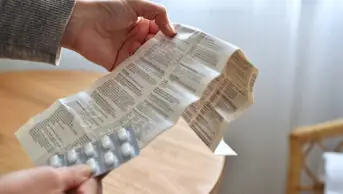
DIGICOMPHOTO / SCIENCE PHOTO LIBRARY
Topical steroid treatments will come with new labelling detailing their potency, following a review by the UK healthcare regulator into side effects caused by the products.
In a statement published on 29 May 2024, the Medicines and Healthcare products Regulatory Agency (MHRA) said that topical steroid products will be labelled as ‘mild’, ‘moderate’, ‘strong’ or ‘very strong’ to help patients use them appropriately and to make it easier for healthcare professionals to provide clear advice.
The change comes after ongoing reports and concerns from patients about topical steroid withdrawal reactions, in which skin can become burning red, dry and itchy after stopping use.
Between September 2021 — when the MHRA published results of a review of topical steroid labelling, which was carried out in 2021 — and August 2023, when additional warnings about withdrawal reactions were added to packaging, the MHRA said there were 267 Yellow Card reports of topical steroid withdrawal or symptoms associated with this term.
The MHRA said that most of these were patients who had a severe reaction following at least six months of using moderate to very potent steroids for eczema, with commonly reported symptoms including intense itching and burning, cycles of flaking skin, exfoliation and oozing.
A small number of patients reported a reaction while the topical steroid was still being used but the most severe issues seemed to be after the patient stopped treatment.
Under the new labelling system, which will be introduced over the next year, hydrocortisone will fall under the ‘mild’ category, with clobetasone classed as a ‘moderate’ steroid, betamethasone as ‘strong’ and clobetasol as ‘very strong’.
Patients are being encouraged to ask their pharmacist or prescriber if they have any questions or concerns about side effects of topical steroids and to use the Yellow Card scheme to report any issues.
Anthony Bewley, head of clinical services and development at the British Association of Dermatologists, said clearer labelling was a “positive step” because patients had reported struggling to understand and remember the different strengths.
Bewley added that awareness — but not necessarily understanding — of side effects had contributed in the past to a rise in wariness of using topical steroids.
“Clearer labelling is one tool to combat this. We believe that making it easy to see the strength of steroids will give people a better understanding of their treatment, and therefore, more confidence,” he said.
“It should also help patients who need to use different potency of topical steroids on different parts of their body and prevent accidental use of stronger steroids on more delicate areas of the body.”
Andrew Proctor, chief executive of the National Eczema Society, said the new labelling would improve safety and effective treatment for patients.
“We are not aware of other countries that have taken this step, so this is likely to be a world first,” he said.
- This article was amended on 10 June 2024 to clarify that steroids will be labelled ‘mild’, ‘moderate’, ‘strong’ or ‘very strong’.
You may also be interested in

Medicines commission calls for greater clarity on risk of suicidal behaviour from antidepressants

Patient safety commissioner pushes government on valproate redress almost two years after report
